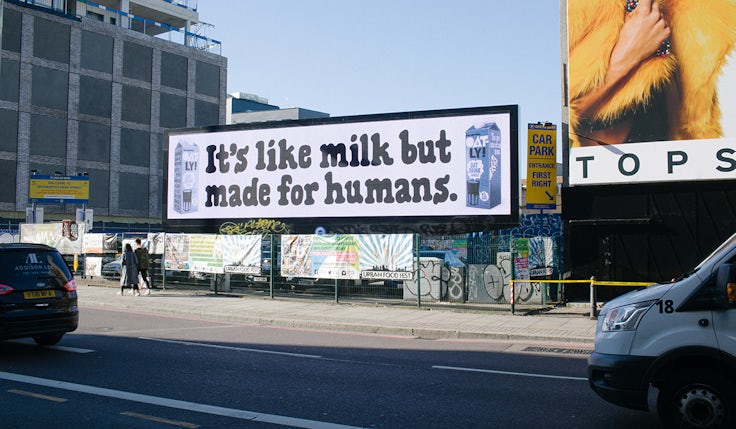Seeing the value: How apprenticeships are being used to unearth fresh talent
After Marketing Week’s Career and Salary Survey data suggested many businesses are doubting the value of apprenticeships, the apprentices themselves explain why brands are missing out.

After years of flying under the radar, marketing apprenticeships appear to be climbing the corporate agenda.
Last week BMW launched a Level 6 communications apprenticeship that will see four recruits work within the marketing team while studying for a BA in Business and Management. Amazon is introducing 13 new apprenticeship schemes, including one in marketing, while Samsung UK is looking for a budding marketer to take part in its pilot apprenticeship programme.
Elsewhere, Procter & Gamble currently has two apprentices working in its marketing team, having joined the business in a cohort of four degree apprentices in September.
Yet, while big brands are welcoming apprentices into the workforce, barriers remain. More than half (57.9%) of marketers work for a brand with no marketing apprenticeship, according to the 2022 Marketing Week Career and Salary Survey. A fifth (21.2%) of the 4,463 marketers surveyed say their company does not currently see the value in such programmes.
Director of qualifications and partnerships at the Chartered Institute of Marketing (CIM), Maggie Jones, identifies a perfect storm of Covid pressures, business confusion, unspent levy funds and young talent being left behind.
She cites last year’s CIM Gen Z research, which found 42% of 16- to 24-year-olds were forced to self-fund additional training in order to break into the workplace.
Then there’s the unspent levy. Annually, levy paying companies pay 0.5% of payroll costs as a tax into their levy to spend on apprenticeship training. Any unused levy expires after 24 months and is returned to HMRC, amounting to £330m in 2019/2020.
You can get into marketing four or five ways, and whichever one you choose you don’t have to stick with it.
Maggie Jones, CIM
In addition, Jones points to the rising apprenticeship dropout rate. Prior to 2014, any organisation could develop an apprenticeship framework, she explains, meaning there were often up to 40 frameworks for each profession.
The introduction of apprenticeship standards in 2014 was intended to create consistency. However, recent Federation of Awarding Bodies research of post-16 education suggests the overall dropout from apprenticeship standards is higher than it was for the original frameworks.
These combined issues are generating negativity around apprenticeships, says Jones. Marketers responding to the Career and Salary Survey list numerous reasons why their brand does not run a marketing apprenticeship, ranging from the business being too small to having no budget to develop a programme.
Jones notes a sense of confusion about apprenticeships among employers, who struggle to make the ‘one size fits all’ system work for them.
“They’ve got levy funds unspent and actually they can’t go to a provider and say: ‘Here’s my baseline, but actually I’d like to layer this [skill] on top’. They can’t fund that out of the levy. It’s a very clunky process and it relies on everybody to be very motivated to make it work, which is not easy,” she points out.
Apprenticeships: A fifth of marketers admit their business ‘doesn’t see value’
Having more testimonials from marketing apprentices would help businesses see the value, she suggests, combating confusion among parents and young people.
“It’s quite a minefield and one of the things we’re trying to do is say: ‘You can get into marketing four or five ways, and whichever one you choose you don’t have to stick with it.’ If you think you’ve made the wrong decision you can always change your route,” says Jones.
She urges businesses to look for solutions to help young people after a difficult two years. This could start by changing the recruitment policy to search for people with apprenticeships, as relying on graduate schemes to provide a talent pipeline appears increasingly challenging.
“With the way university students have been treated over the last couple of years you may find that’s a route that becomes harder, because people have become disenfranchised,” Jones adds.
Creative credentials
One brand that has made a concerted effort to onboard apprentices is Amazon. General manager of integrated marketing for Europe, Ed Smith, explains the ecommerce giant believes in apprenticeships, including in management roles. Amazon plans to offer 1,500 apprenticeships across its UK business in 2022.
“Apprenticeships offer a route for bright individuals from diverse backgrounds to gain access to the marketing industry, which is inclusive, but only when you have navigated your way in,” Smith tells Marketing Week.
Last year Amazon worked with The Marketing Academy Foundation to source an apprentice creative duo. After studying for a degree in animation, Jeng Au decided they wanted to do something creative and was exploring alternative routes when the apprenticeship listing popped up on professional network The Dots.
English graduate and aspiring copywriter Mahalia Peake saw the opportunity posted in a WhatsApp chat for young creatives. Realising it would be difficult to find a role as a single creative, the chance to be paired up with a fellow apprentice represented a “golden opportunity”.
The Marketing Academy Foundation set the copywriter applicants a test brief for Cadbury to gauge their ability to think of concepts for brands. For the art director role, the foundation’s CEO Daryl Fielding convened a creative panel to review the submissions, including creative partner at Harbour, Mick Mahoney, and founder of Quiet Storm, Trevor Robinson.
The creative duo joined Amazon in January 2021. Peake remembers working with her mentor on the first brief to write a radio advert.
“He would give me examples, show me what they’ve done before and the tone of voice. I have an English degree so I know how to write, but it’s fitting that understanding of language to what they need. It was a lot of trial and error, and having someone senior to push you in the right direction,” she explains.
Au and Peake were asked to revamp the format for Amazon’s spring 2021 campaign and the creative team loved their ideas, helping the duo grow in confidence. They got involved in everything from casting and location choice to joining the shoot virtually.
Peake believes because the duo came in as apprentices their colleagues felt a responsibility to let them experience as much as possible.
Marketers hail ‘remarkable’ success of mentoring scheme
“They really put their money where their mouth is with that and they also created a good structure around us. The reason they were able to give us so much responsibility is because they knew there’d be a senior [person] to catch us if we dropped the ball somewhere,” she says.
“That whole mentality allowed us to really be creative and create good work. I remember my mentor always reminding me, ‘you’re here to learn, we’re here to teach you’.”
The duo finished their apprenticeship in December 2021 and were hired permanently, with their work having already gone live in several markets.
“Mahalia and Jeng have demonstrated their talent to us in their apprenticeship year, with work they have created going live in multiple markets. We’re proud of them and delighted to welcome them now as permanent members of our internal creative team,” says Smith.
“It takes vision and persistence to uncover talent that tends not to find its way to us and we enjoy working with The Marketing Academy Foundation for that reason.”
Do something different
Au and Peake are the only ones among their peers to have embarked on an apprenticeship following their degree.
Peake notes a misconception apprenticeships are for hard skills like engineering, rather than communications and marketing. She believes secondary school pupils should be taught about apprenticeships before choosing what to study at university.
“Finding out I didn’t want to do animation after I’d done a degree in it, it was really strange having to find something else I wanted to do,” Au adds. “If I’d known there was an apprenticeship in something creative before I started my degree maybe I would have gone down a different way.”
Peake points out that people of colour are often taught university is the route to bring success to the family when it might not always be the best fit, particularly for young creatives.
For young people exploring alternative routes into the industry, she suggests reaching out to current apprentices to find out how they got there.
Apprenticeships offer a route for bright individuals from diverse backgrounds to gain access to the marketing industry.
Ed Smith, Amazon
“Even knowing about these schemes and opportunities can be difficult if you’re not in the creative industries,” she points out. “If you see someone in a role you’re interested in don’t be afraid to message them on LinkedIn and ask them how they did it. They can direct you to the places where you get the opportunities.”
While there is a lot of talk of diversity in business, Fielding is frustrated not enough brands are putting the effort in to make it a reality.
“Offering apprenticeships and really going through the effort required to find the kind of talent that perhaps doesn’t find you is one way to do it. There are various barriers for young people from different backgrounds, whether it’s ethnicity or socio-economic. They don’t have an aunty at Saatchi and that’s the nub of it,” she stresses.
Fielding explains she searches for applicants who have potential, rather necessarily looking for the finished article.
“If you want something different, you’ve got to do something different,” she states.
The 2022 Agenda: Embracing the possibilities of apprenticeships
One young person who opted for something different is Tom Purveur, who joined housebuilder Vistry Homes as a Level 3 marketing apprentice in August aged just 17.
Purveur’s typical day at Vistry includes sending SMS messages to customers, doing web audits on the CMS, sending targeted emails, updating the social media planner and making sure the marketing cupboard is stocked. He has also produced brochure material based on on-site visits and seen his work displayed in the customer-facing sales office.
Friday afternoons are spent studying towards his Level 3 diploma, which will be completed in May 2023. Purveur has monthly meetings with his assessor to set project topics, the first of which explored the ‘seven Ps of marketing’. The second project was a social media case study involving the CMS and editing a customer facing website.
The only one of his peers studying a marketing apprenticeship, Purveur was never told about such programmes at school. He believes secondary schools should have more career lessons and invite apprentices to give talks. Crucially, the benefits he sees in his current career path are numerous.
“You get to have workplace training, so as soon as you come out of your apprenticeship you can easily get a job because you’ve got the experience,” Purveur states. “Whereas people who’ve got qualifications may be good in what they’ve done, but they may not be good in a workplace environment.”
Win-win situation
Abbie Bradley agrees more needs to be done within schools to make young people aware marketing apprenticeships exist.
A Level 4 market research apprentice within the innovation team at Ipsos Mori, a course created by the Market Research Society (MRS), Bradley developed a passion for marketing during her Business Studies A Level.
Her grammar school pushed pupils towards university education, to the point where the teacher would go around the class asking pupils: “What university have you applied to?”
Keen to progress her career in a way that combined the independence of work with continued learning, Bradley looked into apprenticeships.
“When I first saw the job advert I didn’t really know what market research was, but as I looked more deeply into it I saw we’d be working closely with clients and talking to so many different people within the industry,” she explains.
I’ve been overwhelmed by the support and the opportunities that I’ve already got.
Abbie Bradley, Ipsos Mori
Bradley started her apprenticeship in mid-December and went into the office for the first time last week. There is one other apprentice in her team and another in a separate team at Ipsos Mori.
She works on every stage of questionnaire building, from link checking to designing report templates. One day a week is dedicated to studying, based on monthly workshops with her tutor.
“When I started I had a lot of introduction calls with the team, a couple of directors and the head of innovation. Everyone I spoke to was so excited and it was so reassuring to feel wanted and that people felt excited to work with me, because they can mould me into how they want me to work and I’m learning at the same time, so it’s a win for both of us,” Bradley points out.
She values being able to put what she learns into real life straight away and now feels confident messaging people external to the business. Bradley does, however, acknowledge a “stigma” in some companies about developing apprenticeship schemes, despite the obvious long-term gains.
“Although they might have to spare some time to pair up with the apprentice and give them support, in the long term they’re going to be so much better off because they’ve moulded someone into the appropriate candidate,” she explains.
Publicising the positive benefits of marketing apprenticeships would help address the misconceptions, Bradley suggests, as would more workshops in schools. To explain why the apprenticeship was established and how it will help attract more diverse talent, the MRS is hosting a market research apprenticeship launch event next week in London.
For Bradley, her first few months as an apprentice have been an experience she would highly recommend.
“I’ve been overwhelmed by the support and the opportunities that I’ve already got. It will continue to head in that direction and I’m excited to see what comes of it,” she adds.







